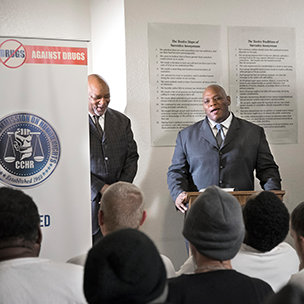Russian Roulette with Psychotropic Drugs

Although there can be numerous explanations offered for senseless acts of violence, they continue unabated. A new report released by CCHR International sheds light on a common denominator in many mass shootings: psychotropic drugs.
With millions of people taking these drugs, clearly not everyone will experience violent reactions. But what drug regulatory agency warnings confirm is that a percentage of the population will. As CCHR’s report documents, of nearly 410 psychiatric drug warnings, 27 warned of violence, mania, psychosis, hostility, aggression or homicidal ideation and 49 of self-harm or suicide/suicidal ideation.
A leading psychopharmacologist pointed out that about five percent of those taking antidepressants in clinical trials drop out due to increased mental and/or physical agitation. If five percent of the 41 million Americans taking antidepressants were to experience increased mental and/or physical agitation, that equals 2.05 million people in the US alone. How many could become so agitated they become violent?
It is perhaps no coincidence acts of violence and suicide continue to increase at pace with the increase in the prescription of psychotropic drugs. It is a case of playing Russian roulette with people’s lives.
Law enforcement is not required to investigate or report on prescribed drugs linked to violence, and media rarely pose the question. From those with available medical data, over a three-decade period there were 65 high-profile acts of senseless violence confirmed as committed by individuals taking or withdrawing from psychiatric drugs, resulting in 357 dead and another 336 wounded. This included at least 36 school shootings and/or school-related acts of violence.
The infamous Columbine ringleader, Eric Harris, was taking the antidepressant Luvox when he and a friend killed 13. Nikolas Cruz, killing 17 at Marjory Stoneman Douglas High School, received treatment at Henderson Behavioral Health and a late 2016 report noted Cruz took his medication regularly. Stephen Paddock who shot dead 58 people at a Las Vegas country music festival on October 1, 2017, was on the sedative-hypnotic Valium.
Vested interests continue championing the use of such drugs, as the psychiatric-pharmaceutical drug industry rakes in $35 billion on average a year, just in the US. Antipsychotic drugs alone net the global pharmaceutical industry at least $14.6 billion annually. Is it possible that this vested interest is preventing a thorough investigation of this link, despite calls for such since the Columbine High School massacre in 1999?
It is perhaps no coincidence acts of violence and suicide continue to increase at pace with the increase in the prescription ofpsychotropic drugs.
In her 1999 article, “Guns and Doses,” former Congressional staffer and award-winning journalist, Kelly Patricia O’Meara stated: “Although the list of school-age children who have gone on violent rampages is growing at a disturbing rate—few in the mental health community have been willing to talk about the possibility that the heavily prescribed drugs and violence may be linked.” Such drugs were the common denominator between the cases of school shooters she cited.
In response, then Colorado State Representative Penn Pfiffner chaired a hearing to address the connection between violent behavior and psychotropic drugs. He noted: “There is enough coincidence and enough professional opinion from legitimate scientists to cause us to raise the issue and to ask further questions.”

END PSYCHIATRIC ABUSE
As a nonprofit mental health watchdog, CCHR relies on memberships and donations to carry out its mission. To become part of the world’s largest movement for mental health change, join the group that has helped enact more than 180 laws protecting citizens from abusive psychiatric practices.



